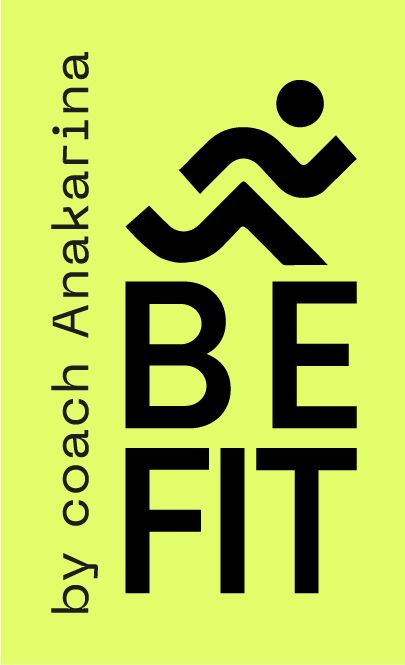The ultimate guide to injury prevention exercises for runners
Running is one of the most rewarding forms of exercise, but it’s not without its challenges. Injuries like runner’s knee, shin splints, and IT band syndrome can disrupt your progress and sideline you for weeks. The good news? Many of these injuries can be prevented with the right exercises.
At Be Fit Runners, we’re here to help you stay injury-free and keep chasing your goals. This guide will cover essential injury prevention exercises, how they benefit your body, and tips to incorporate them into your routine. Let’s get started!
In case you don’t know about us, we are an online community of endurance and running coaches ready to help you thrive in your running journey.
Why injury prevention is essential for runners
Running puts repetitive stress on your body, particularly your knees, hips, and feet. Over time, this can lead to overuse injuries that hinder your performance. Strengthening key muscle groups and improving flexibility can:
- Enhance performance: Stronger muscles and better mobility make for more efficient running.
- Reduce injury risk: Properly conditioned muscles absorb impact better, protecting your joints.
- Support recovery: Improved flexibility aids in post-run recovery.
By dedicating time to injury prevention exercises, you’re not just protecting yourself—you’re setting yourself up for long-term success.
Best injury prevention exercises for runners
Injury prevention exercises target specific areas of the body that are prone to running-related strain. Below, we’ll explain how each exercise works, its benefits, and how to perform it correctly.
1. Single-leg squats
- Target: Quads, glutes, and core.
- How to do it:
- Stand on one leg with the other slightly raised.
- Slowly lower yourself into a squat, keeping your knee aligned over your foot.
- Push back up to standing and repeat for 10–12 reps per leg.
- Why it helps: Improves balance, strengthens knees, and stabilizes your lower body to reduce the risk of runner’s knee.
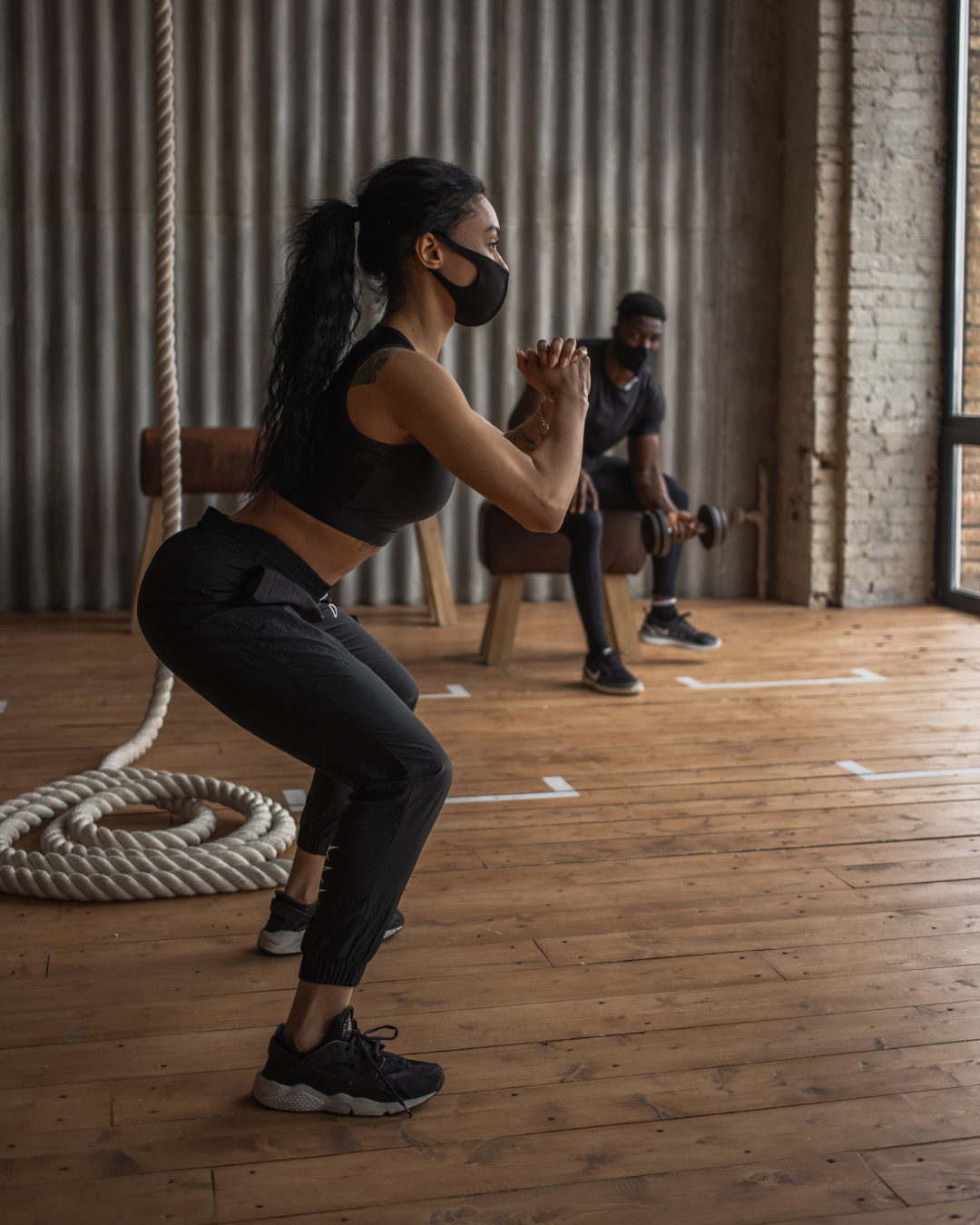
2. Glute bridges
- Target: Glutes, hamstrings, and lower back.
- How to do it:
- Lie on your back with your knees bent and feet flat on the floor.
- Lift your hips until your body forms a straight line from shoulders to knees.
- Lower back down slowly and repeat for 10–15 reps.
- Why it helps: Strong glutes stabilize your pelvis, reducing the strain on your knees and hips during runs.
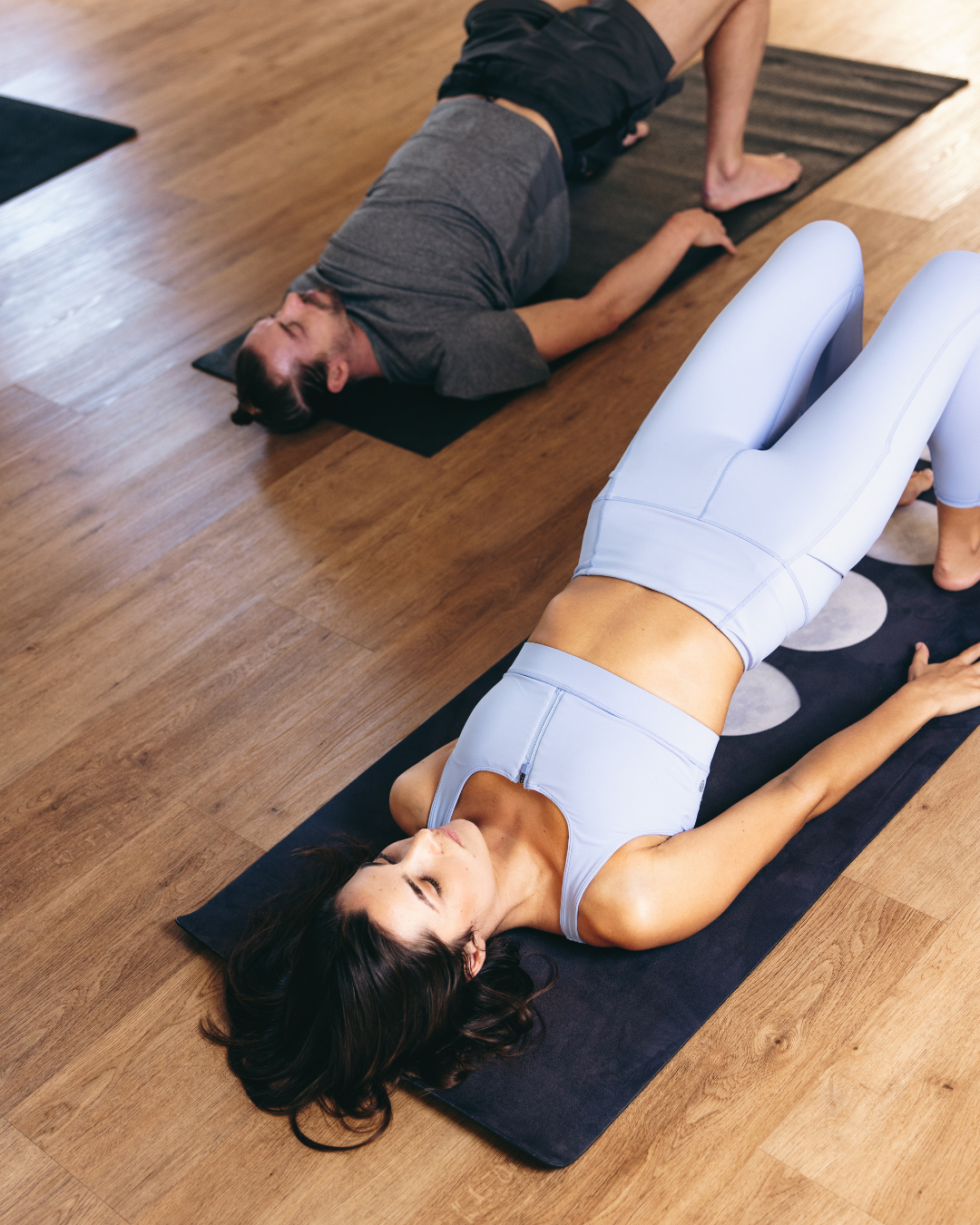
3. Plank variations
- Target: Core, shoulders, and lower back.
- How to do it:
- Start in a forearm plank position with your elbows under your shoulders.
- Hold for 30–60 seconds.
- Add variations like side planks or shoulder taps for extra challenge.
- Why it helps: A strong core supports proper running posture, reducing fatigue and lower back pain.

4. Bird dog
- Target: Core and lower back.
- How to do it:
- Start on your hands and knees.
- Extend your right arm and left leg simultaneously.
- Pause, then return to the starting position. Switch sides and repeat for 10–12 reps.
- Why it helps: Improves coordination and strengthens your core, preventing imbalances that can lead to injuries.
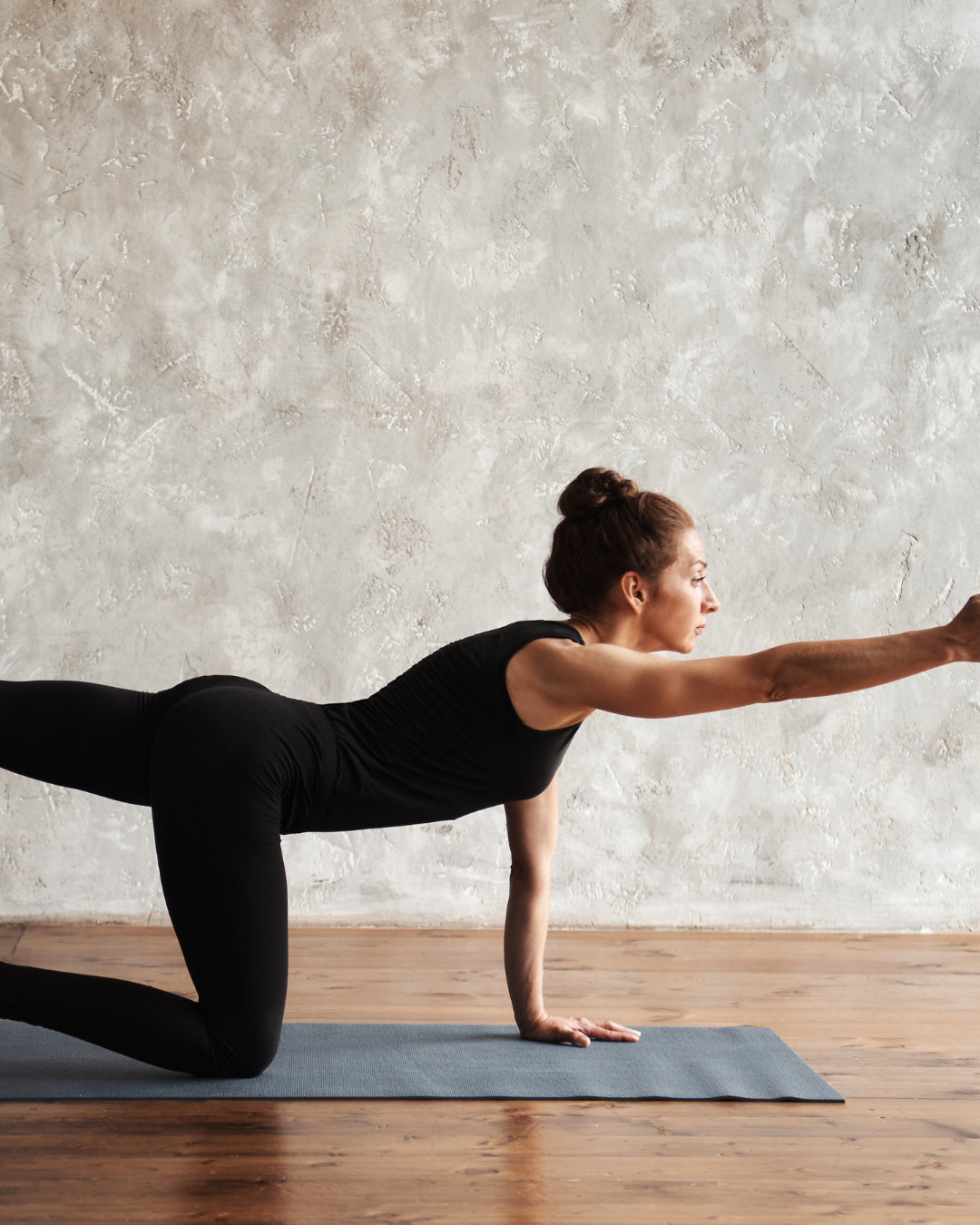
5. Hamstring stretches
- Target: Hamstrings.
- How to do it:
- Sit on the floor with one leg extended and the other bent.
- Reach for your toes on the extended leg and hold for 20–30 seconds.
- Switch legs and repeat.
Why it helps: Prevents tightness in the hamstrings, reducing the risk of strains and improving stride efficiency.
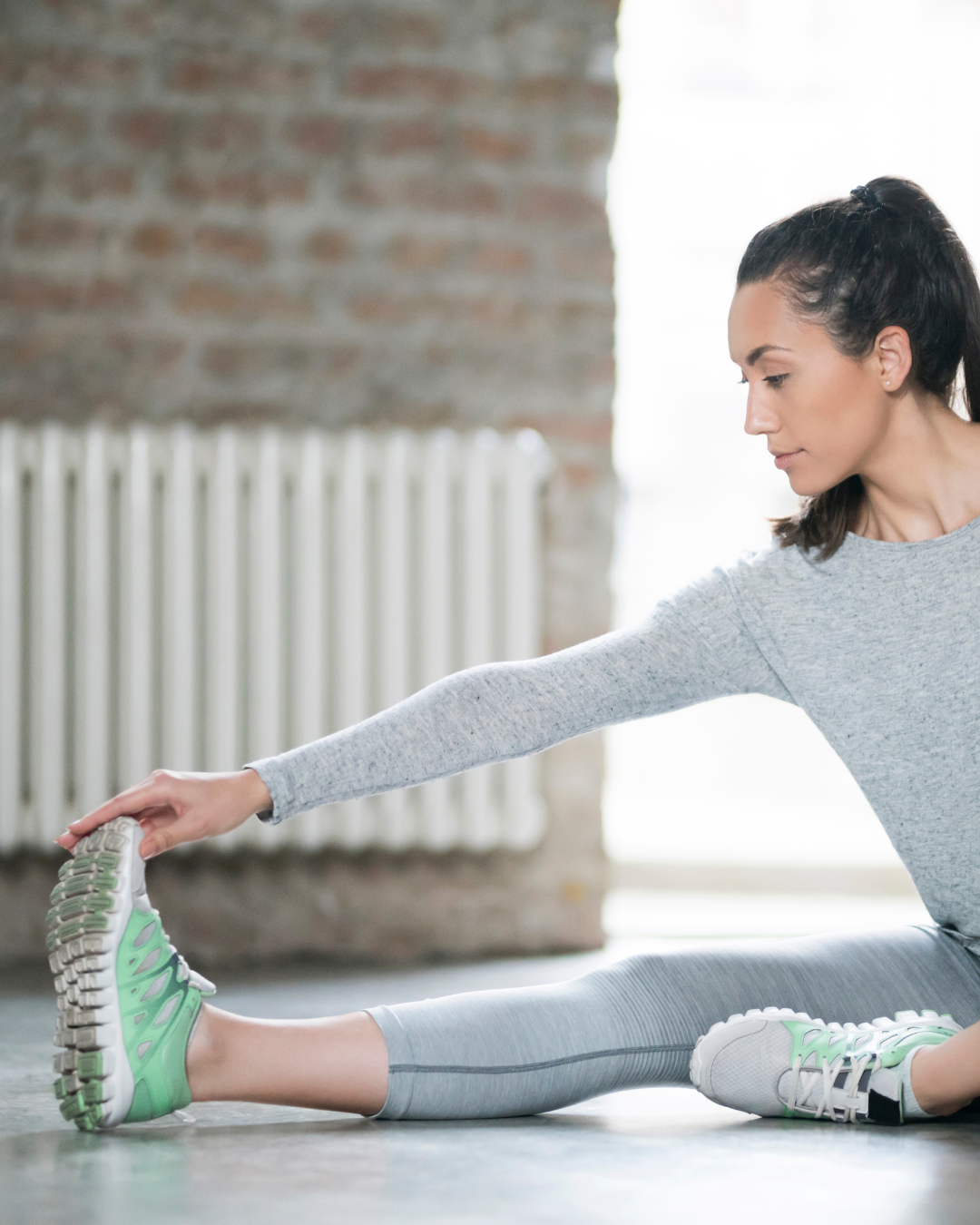
6. Hip flexor stretches
- Target: Hip flexors.
- How to do it:
- Kneel on one knee with the other foot forward at a 90-degree angle.
- Push your hips forward gently and hold for 20–30 seconds.
- Switch sides and repeat.
- Why it helps: Relieves tension in the hips, improving range of motion and reducing lower back strain.
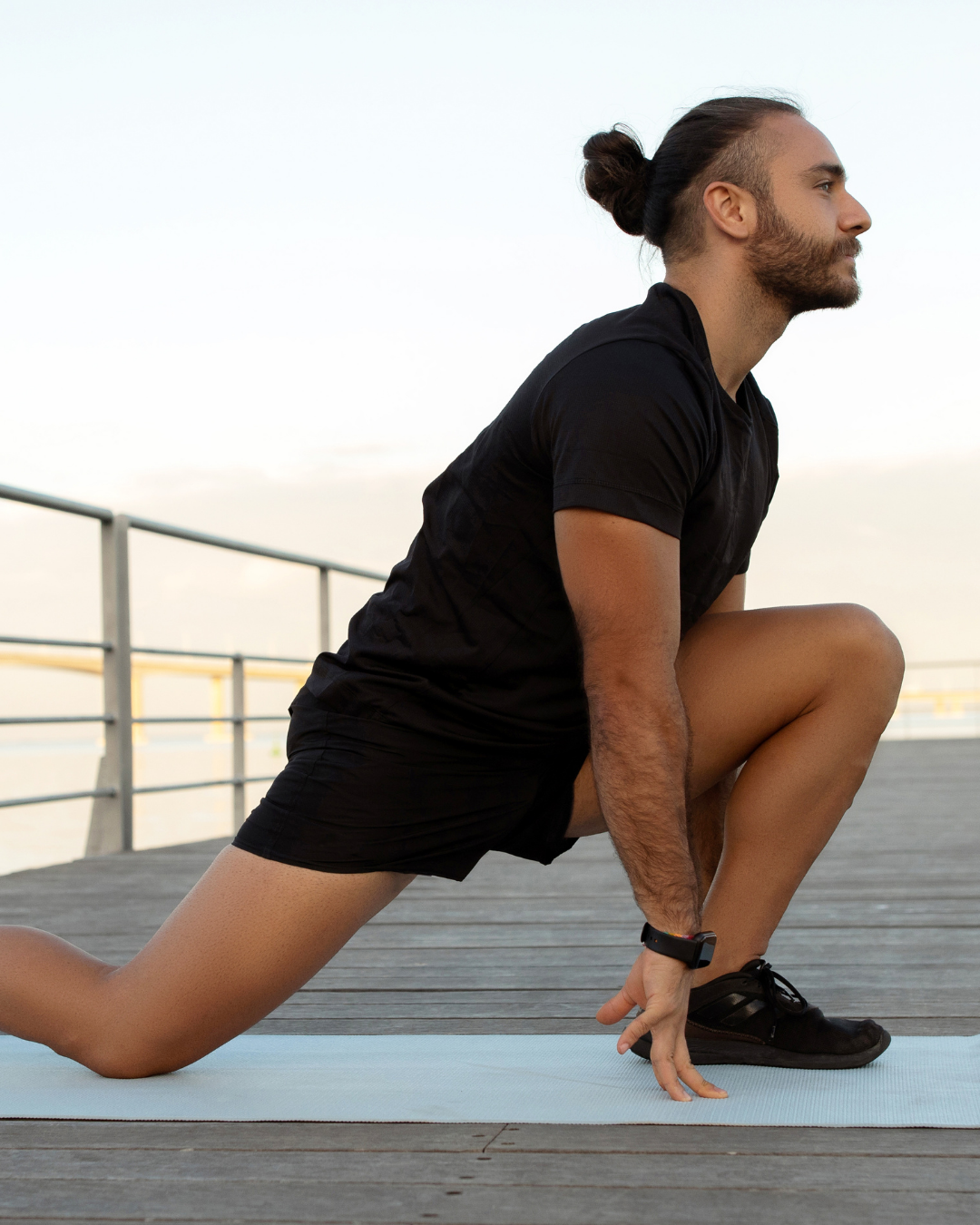
7. Leg swings
- Target: Hip flexors, hamstrings, and quads.
- How to do it:
- Stand next to a wall for balance.
- Swing one leg forward and backward in a controlled motion for 10–12 reps.
- Switch legs and repeat.
- Why it helps: Warms up your hips and legs, reducing stiffness and preparing your body for dynamic movements.
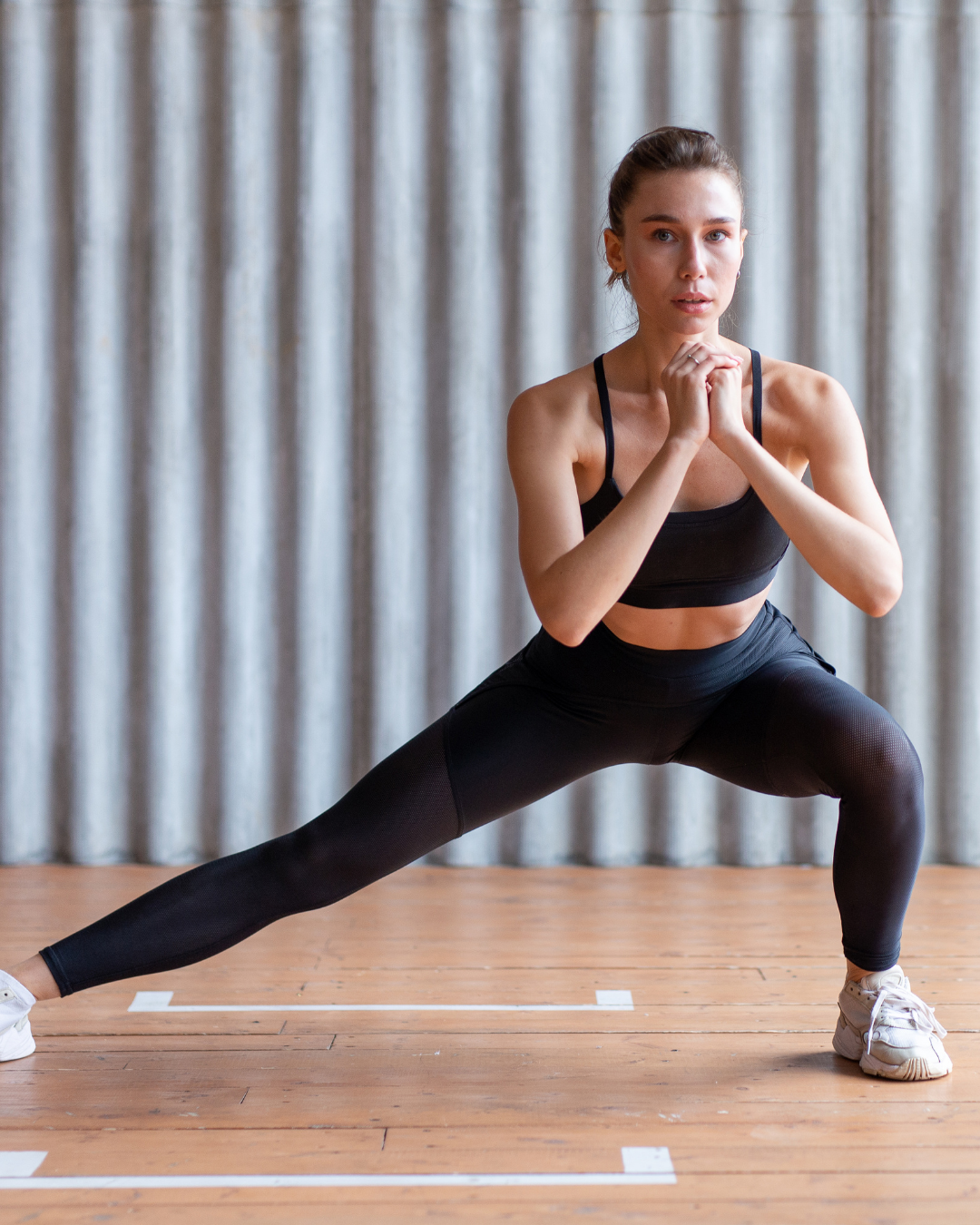
8. Step-ups
- Target: Quads, hamstrings, and glutes.
- How to do it:
- Step onto a sturdy platform or bench with one foot.
- Push through your heel to bring your other foot up, then step back down.
- Repeat for 10–12 reps per leg.
- Why it helps: Builds strength and stability in the lower body, protecting your knees from overuse injuries.

Injury prevention routines to follow
To see more tips in action and get weekly guidance, follow me on Instagram at @coach_anakarina.
I share simple, effective advice for runners of all levels—from strength tips to recovery reminders and mindset shifts that keep you consistent. You can also check out my
hip
activation routineand my
core
and glute mobility warm-up. Join our community and get inspired to run smarter, not harder.
Do’s and don’ts for injury prevention exercises
Do’s
- Warm up before every run with dynamic stretches like leg swings and high knees.
- Incorporate strength training 2–3 times a week to build resilience.
- Focus on proper form to avoid strain or injury during exercises.
Don’ts
- Skip recovery days—rest is essential for muscle repair.
- Perform exercises with poor form; use mirrors or a coach to check alignment.
- Neglect flexibility training, as tight muscles increase injury risk.
Sample injury prevention routine for runners
Here’s how to structure a weekly routine for injury prevention:
- Monday: Core and lower body strength training (planks, single-leg squats, glute bridges).
- Wednesday: Dynamic warm-ups (leg swings, high knees) followed by hip flexor and hamstring stretches.
- Friday: Full-body routine (step-ups, bird dog, and static stretches).
- Sunday: Active recovery with yoga or foam rolling.
Pro tip: Pair your exercises with the right running shoes. Check out our guide on the best marathon shoes.
Stay strong and injury-free with Be Fit Runners
Injury prevention is the foundation of a successful running journey. By incorporating these exercises into your routine, you’ll not only reduce your risk of injuries but also improve your overall performance.
Ready to take your training to the next level? Join our online membership for runners for expert guidance, personalized plans, and access to a supportive community. Let’s keep you running strong and injury-free!
* Blog Disclosure: Reading our blog does not replace any medical or health consultations with licensed professionals. This blog is created with educational purposes.

Hola, I'm coach Kari
Many of my athletes come to me because they no longer enjoy running, whether due to injury or simply because they're not improving their performance. I want to help you break out of this vicious cycle and enjoy running again. Through my running coaching, you will improve your techniques and become a stronger runner.
Download your running roadmap to 5k,10k or your first marathons (EN/ES available) 👇




